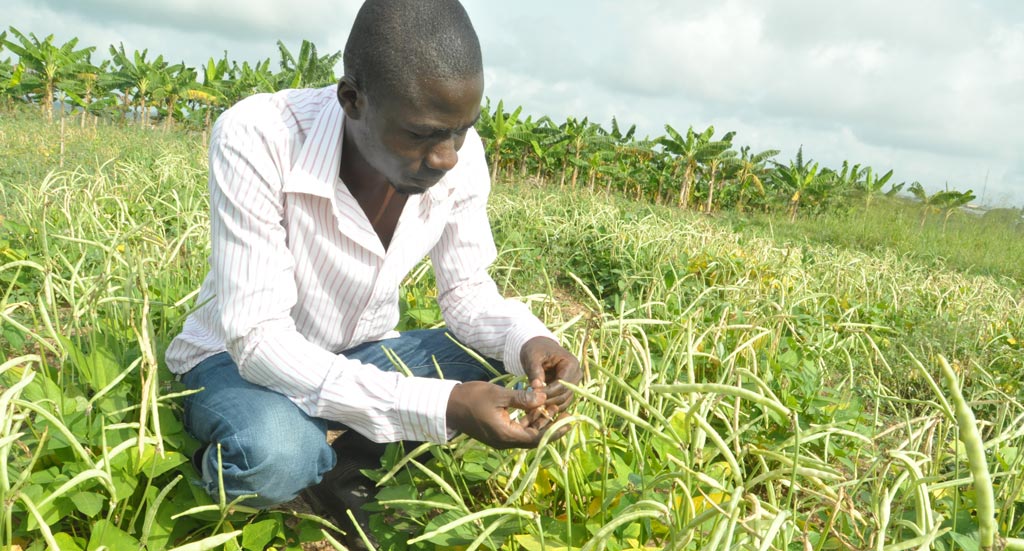
Scientists say new spacing could guarantee more yield for cowpea
CGIAR scientists are recommending a new spacing regime for cowpea that could give farmers up to 79% more yield if adopted. The new spacing is a result of a study on the Effects of plant density on the performance of cowpea in Nigerian savannas, conducted during the 2013 and 2014 growing seasons at the IITA experimental stations in Kano and Zaria.
The study addressed the need to devise a viable alternative that would help limit the bottlenecks that farmers undergo in cultivating cowpea—a highly nutritious crop yet easily susceptible to parasitic weeds, and pest and disease infestation. It looked at the large disparity in farmers’ yield (0.3 Mg/ha) and yield obtainable on experimental plots (1.5-2.5 Mg/ha) and proposed simple agronomic practices that could help reverse the trend.
By simply adjusting plant density, researchers found that grain yield significantly improved from 1.20 Mg/ha for a density of 133,333 plants per ha to 2.16 Mg/ha for a density of 400,000 plants per ha. Yield also increased by 68% when planted at a density of 266,666 plants/ha and 79% when planted at a density of 400,000 plants/ha.
These findings could potentially benefit over 20 million people in West and Central Africa depending on cowpea for their livelihood.
But how can the smallholder African farmer immediately start getting more from his field? The study explains that in addition to planting improved cowpea varieties, farmers must immediately change from using the current 75 by 20 cm spacing with two seeds planted per stand (this spacing gives 133,333 plants/ ha) to double or triple rows on ridges spaced 75 cm apart to achieve corresponding densities of 266,666 and 400,000 plants per ha, respectively.
According to the study, these densities gave higher crop performance in terms of light interception, biomass production, yield, and yield components.
“The answer is very simple. Since cowpea like any other grain crop in northern Nigeria is grown on ridges spaced 75 cm apart, the only option to increase plant density is to increase the number of rows planted per ridge from 1 to 2 or 3 rows. This way, smallholder farmers can increase cowpea grain and fodder yields if they adopt a density of 266,666 plants or more per ha in cowpea cultivation,” said the scientists.
The study was conducted by IITA’s Alpha Kamara, Abdullahi Tofa, Stephen Kyei-Boahen, Reuben Solomon, and Nkeki Kamai, and Hakeem Ajeigbe from the International Crop Research Institute for the Semi-Arid Tropics (ICRISAT).

